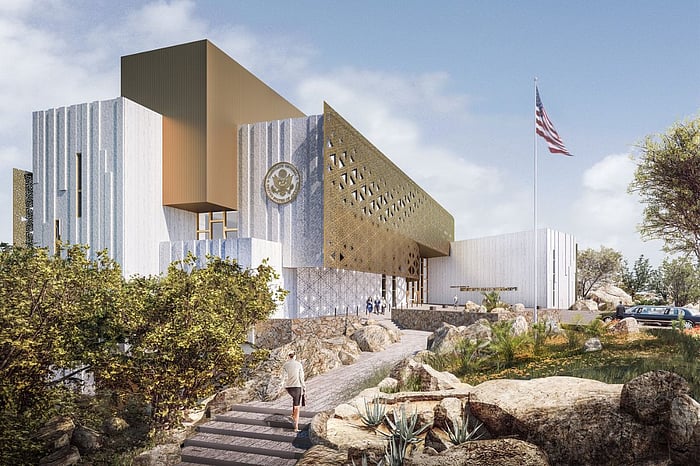The U.S. Department of State’s March 2025 Visa Bulletin can bring fresh smiles for Indian applicants who belong to key employment-based visa categories. Notably, the EB-2 and EB-3 Final Action Dates for India will advance by six weeks, reflecting increased availability of immigrant visas. Meanwhile, other categories, including EB-1 and EB-5, will remain unchanged.
Key Updates on Employment-Based Visas
EB-2 and EB-3 Advancements
For Indian applicants, the Final Action Date for EB-2 visas will move forward to December 1, 2012, while EB-3 Professionals and Skilled Workers will see an advancement to February 1, 2013. The EB-3 Other Workers category follows the same timeline. These changes are crucial for individuals awaiting their green card processing, as they allow applicants with earlier priority dates to proceed with their applications.
USCIS Adjustment of Status Applications
The U.S. Citizenship and Immigration Services (USCIS) has confirmed that in March, it will accept adjustment of status applications from individuals whose priority dates are earlier than the listed Final Action Dates. This development provides clarity for applicants planning their immigration timeline.
EB-4 Retrogression and Possible Unavailability
Unlike the positive movement in EB-2 and EB-3 categories, the EB-4 category will retrogress by nearly 18 months, setting the new Final Action Date at August 1, 2019. The State Department has warned that this category may become “Unavailable” in the coming months, adding uncertainty for applicants.
Certain Religious Workers (SR) Program Expiry
The Certain Religious Workers (SR) Program is set to expire on March 14, 2025. If Congress does not extend the program, it will become unavailable, meaning no visas will be issued beyond March 13, 2025. However, if extended, the Final Action Date will remain August 1, 2019, through the end of March.
Breakdown of Employment-Based U.S. Visas
EB-1 (Unchanged at February 1, 2022): This category is reserved for individuals with extraordinary ability, outstanding professors or researchers, and certain multinational executives or managers.
EB-2 (December 1, 2012): Issued to professionals with advanced degrees or individuals with exceptional abilities in sciences, arts, or business.
EB-3 (February 1, 2013): Available to skilled workers, professionals, and other workers who do not qualify for EB-2.
EB-4 (August 1, 2019): Includes special immigrant categories such as religious workers and certain U.S. government employees.
EB-5 (Unchanged at January 1, 2022): Designed for investors who meet minimum investment and job creation requirements.
Understanding the Visa Bulletin: Final Action Dates vs. Dates for Filing Applications
The Visa Bulletin provides two sets of dates:
Final Action Dates: Determines when visas can be issued.
Dates for Filing Applications: Indicates when applicants should submit required documents.
USCIS determines whether to use the “Final Action Dates” or “Dates for Filing Applications” each month, depending on visa availability. Applicants must check the USCIS website to confirm the applicable chart.
Annual Limits and Per-Country Caps
The total number of immigrant visas issued each year is subject to strict numerical limits:
Family-Sponsored Preference Immigrants: 226,000 visas.
Employment-Based Preference Immigrants: At least 140,000 visas.
Per-Country Limit: No single country can receive more than 7% of the total annual preference visas (25,620 visas).
Dependent Area Limit: Capped at 2% (7,320 visas).
Family-Sponsored Immigration Preferences
F1: Unmarried Sons and Daughters of U.S. Citizens (23,400 visas).
F2A: Spouses and Children of Permanent Residents (77% of second preference allocation, 75% exempt from per-country limit).
F2B: Unmarried Sons and Daughters (21+) of Permanent Residents (23% of second preference allocation).
F3: Married Sons and Daughters of U.S. Citizens (23,400 visas).
F4: Siblings of U.S. Citizens (65,000 visas).
Employment-Based Immigration Preferences
EB-1: Priority Workers (28.6% of employment-based visas).
EB-2: Advanced Degree Holders and Persons of Exceptional Ability (28.6%).
EB-3: Skilled Workers, Professionals, and Other Workers (28.6%, with 10,000 reserved for Other Workers).
EB-4: Special Immigrants (7.1%).
EB-5: Investor Visa (7.1%, with reserved percentages for rural, high-unemployment, and infrastructure investments).
Conclusion
The March 2025 Visa Bulletin brings much-needed progress for Indian applicants in the EB-2 and EB-3 categories. However, challenges remain in EB-4, and uncertainty looms over the Certain Religious Workers (SR) Program.
As USCIS continues to process applications, individuals should closely monitor visa availability, consult with immigration experts, and prepare their documentation in accordance with the latest guidelines.
Source:https://www.fortuneindia.com/enterprise/us-visa-bulletin-big-relief-for-indian-applicants-as-eb-2-and-eb-3-categories-advance-in-march-2025/120562

